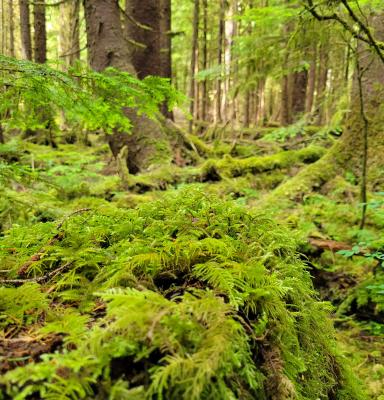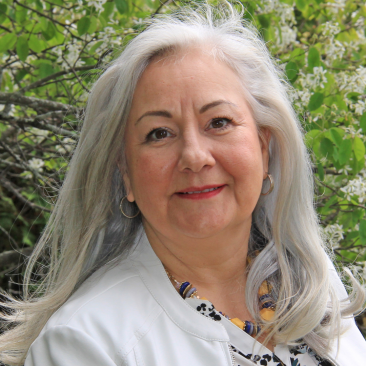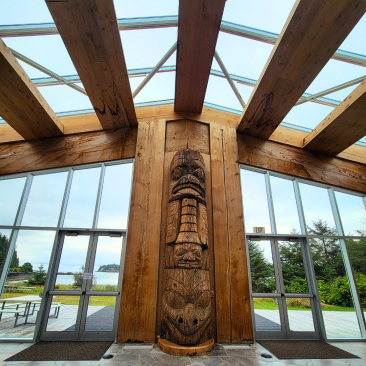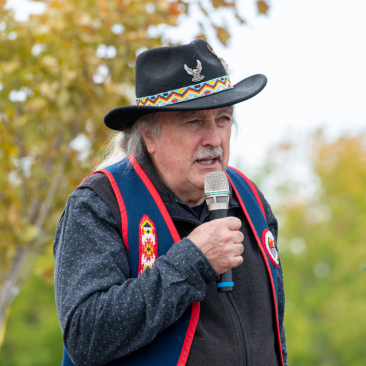
FSC is the only forest certification system in Canada with FPIC requirements
To achieve and maintain FSC certification forest owners and managers must uphold FPIC requirements.
This gives Indigenous Peoples the right to grant, withhold, or withdraw consent for forest management activities affecting traditional lands -in accordance with the United Nations Declaration on the Rights of Indigenous People (UNDRIP), and the International Labour Organization’s Convention 169.
We understand that our work alone is not a solution to the very real challenges faced by many Indigenous communities, but by enshrining FPIC requirements into our standards (globally and domestically) FSC helps open the door for shared economic benefits, facilitates direct participation n sustainable forest management and planning, supports aspirations for self-determination, and drives ecosystem resiliency by holding industry players accountable for performance based requirements including FPIC.
An Introduction to FSC Canada's Free, Prior and Informed Consent Guidelines
Review of the core concepts of Free, Prior and Informed Consent, as per the FSC Canada National Forest Stewardship Standard and Free, Prior and Informed Consent Guidance.

“FSC certification processes provide an opportunity for Indigenous Peoples to directly engage in sustainable forest management including development and planning.” - Lorraine Rekmans, Algonquin and French heritage, member of the Serpent River First Nation, small business owner

Benefits of the FSC for Indigenous Peoples' impacted by Forest Management Activities
-
Respect for Indigenous Peoples' Rights and Governance
FSC upholds Indigenous Peoples’ rights through the Free, Prior, and Informed Consent (FPIC) requirements found in Principle 3 of the National Forest Stewardship Standard. It is the only forest certification system with these requirements in Canada.
-
Honoring Traditional Ecological Knowledge
FSC certification recognizes and respects the cultural values and traditional ecological knowledge of Indigenous Peoples, integrating wisdom for enhanced biodiversity (found in criterion 3.6 of the standard).
-
Protection of Sites with High Cultural and Economic Importance
FSC Canada’s standard require forests or lands with “high conservation value” to be identified, protected and accessible for traditional practices and ceremonies. These can include critical habitats for rare, threatened and endangered species, culturally significant sites, or areas of high social or economic importance (found in criterion 3.5 of the standard).
-
Fostering Collaboration and Network Building Opportunities
The FSC-certification process helps to foster collaboration and network building opportunities for Indigenous communities with government, NGOs, and businesses which can provide support, resources, and informationsharing opportunities.
-
Enabling Meaningful Participation
The FSC certification process respects Indigenous Peoples’ rights by requiring culturally appropriate engagement and collaboration in forest management decisions impacting traditional territories (found in criterion 3.1 of the standard).
-
Transparency about the impacts of Forest Management activities
FSC standards require certificate holders to publish the results of progress towards achieving forest management objectives, impacts of forest management activities and the condition of the forest management unit (found in criterion 8.2 of the standard).
-
Economic Opportunites
FSC certification can create economic opportunities by opening markets that prioritize sustainable and responsible sourcing of wood products including from Indigenous managed forests. FSC standards also supports local employment opportunities for forest dependent communities (found in criterion 4.3 of the standard).

“The FSC certification system provides a strong policy pathway of respect for Indigenous ways of knowing, responsibilities and rights. It gives me the most hope of all forest certification systems in terms of supporting Indigenous leadership to heal and rebalance human relationships with Mother Earth.” - Larry McDermott, Algonquin from Shabot Obaadjiwan First Nation, Executive Director of Plenty Canada
Case Study: Rebuilding Relationships and Fostering Collaboration
Situated on the traditional territory of the Wet’suwet’en Peoples and Carrier Nations, Burns Lake Community Forest faced significant challenges in the early 2000s, including a lack of engagement with Indigenous communities and an unclear management strategy. However, through restructuring its management model and achieving Forest Stewardship Council (FSC) certification in 2017, BLCF transformed its operations, prioritizing environmental stewardship, joint decision-making, and profit-sharing with partner First Nations.
Case Study: A Partnership Between Industry and First Nations
For over a century, Indigenous communities along Lake Superior fought for their rights to manage the lands they were removed from in 1925. In 2006, collaboration with timber companies, driven by Forest Stewardship Council (FSC) standards, began respecting these rights, protecting habitats, and preserving cultural traditions. The formation of Wahkohtowin Development GP in 2016 united three First Nations to create sustainable economic growth and new forestry opportunities.
